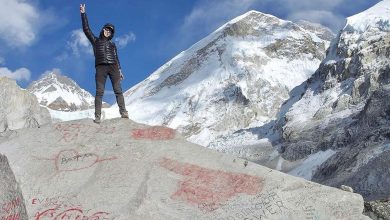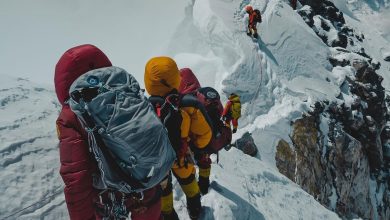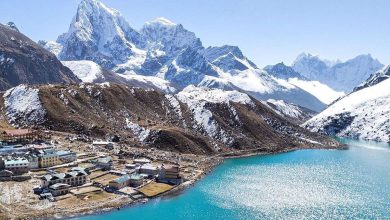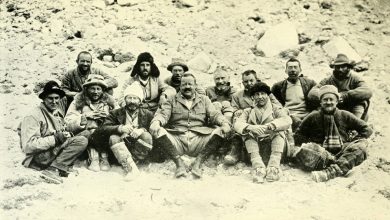Nepali Sherpa Saves Malaysian Climber From the Everest Death Zone
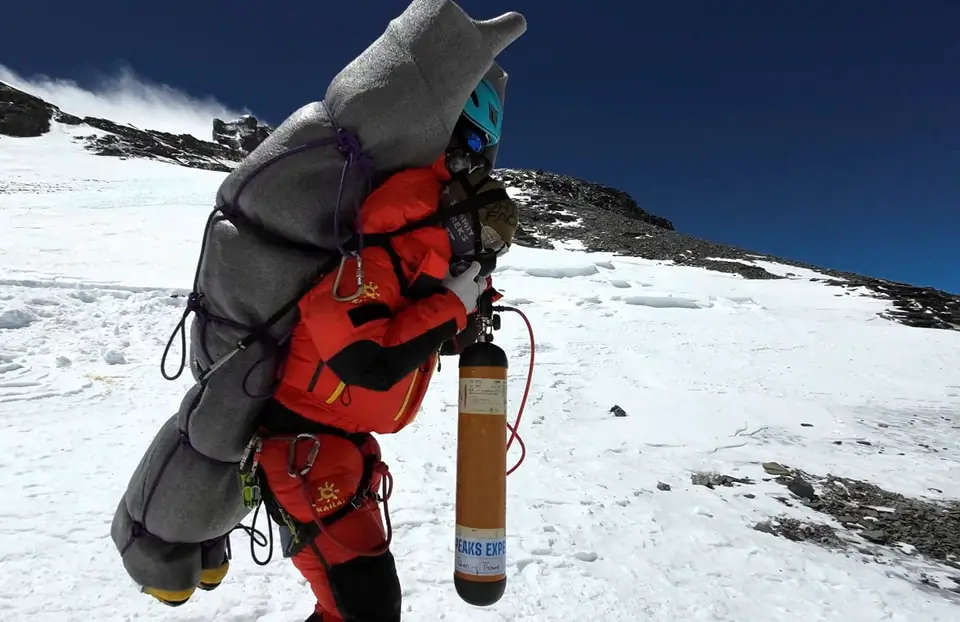
A Nepali Sherpa, 30 years old, Gelje Sherpa rescues a freezing Malaysian climber in a very rare high-altitude rescue from Mt. Everest. Gelje Sherpa was guiding a Chines client to the summit of Mt. Everest at 8,849 meters on Thursday, 18th May 2023 when he spotted the Malaysian climber cling to a rope.
The Nepali Sherpa after seeing the Malaysian climber clinging to his life and freezing in the death zone of Everest (where the temperature can drop as far as -30°C) passed up the summit expedition to save him.
Gelje along with another Sherpa guide, Nima Tahi Sherpa, joined hands in the rescue mission to save the Malaysian climber.
View this post on Instagram
Gelje and Nima Haule the Malaysian Climbers 600 Meters Down
Gelje Sherpa joined by a fellow Sherpa guide, Nima Tahi Sherpa hauled the Malaysian climber 600 meters down to the South Col region from the Balcony area of the Everest. The duo of rescuers wrapped the Malaysian climber in a sleeping mat, dragged him on snow, and carried him on their backs turn by turn, for 6 hours before reaching Base Camp III (7,162 meters).
And, from the base camp, the Malaysian climber was rescued by a helicopter using a long line as landing isn’t possible above Everest Base Camp II.
The Malaysian climber was associated with the Kathmandu-based climbing company, Seven Summit Treks. The trekking/climbing company provided logistics details to the Malaysian climber. Seven Summit Treks leader, Tashi Lakhpa Sherpa, declined to reveal the name of the climber keeping professional courtesy and respecting his client’s privacy. But, he did reveal that the Malaysian climber had been put back on a return flight to his home last week.
The Nepali authorities issued a record high of 478 permits for Everest climbing for this year’s March to May spring climbing season. Sadly, the death toll on the treacherous path and the freezing climate on Everest are also record-high in the past 8 years, with at least 12 climbers dead and 5 still missing on the slopes of the tallest peak in the world.
Saving a Life is More Important That Praying at a Monastery
One of the most criticized traditions in mountaineering is ‘every man for himself’, where the fallen climbers are left behind. Because considering the risks and difficulty of a rescue on the dangerous trails of the mountain where even a simple blunder could cost a life, self and client’s safety is always the first priority of climbers/guides alike.
Going out of the way to help somebody on a high-altitude slope where the chances of successful rescue are already slim. Doesn’t only put the success rate to a bare minimum but also increases the probability of fatality of the both rescuer and rescuee.
Every single climber who goes seeking glory on the tallest snowy peaks acknowledges this fact and they are ready to accept white snowy slopes as their resting destination if that’s what fate has in store for them.
So, this heroic feat of both Gelje Sherpa and Nima Tahi Sherpa is something we haven’t heard in a while. Speaking on the heroic deeds of the duo Sherpa guides, Bigyan Koirala, from the Department of Tourism told it was a very rare operation and how almost impossible it is to rescue climbers at altitudes that high.
Gejle who was en route to the summit of Everest with a Chinese client convinced the client to give up his attempt to scale the mountain and start descending. The heroic mountaineering guide, who is also a Buddhist devotee believes,
“Saving one life is more important than praying at the monastery”
Gelje’s heroic act saved a life that otherwise would have been claimed by the cold trails to the roof of the world.
Another Malaysian climber, Muhammad Hawari Hashim who was in the same expedition group as the late Malaysian Civil Defense Officer, Awang Askandar (laid to rest in Sabah, Malaysia on Saturday, 27th May) was reported missing after the summit on 19th May 2023.
Gelje Sherpa- Probably The Hardest Rescue In My Lifetime
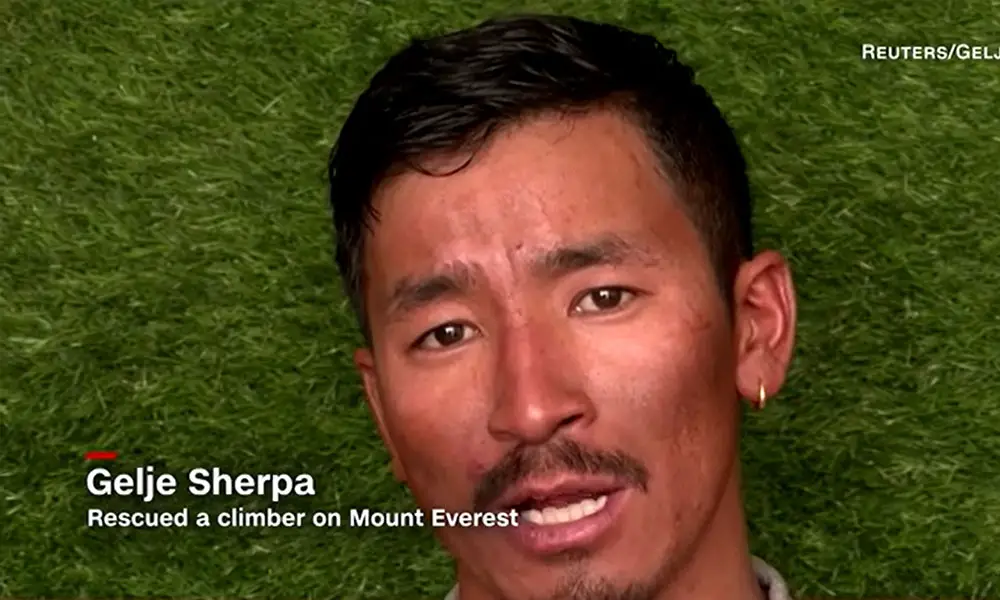
Speaking to CNN on 4th Jun 2023, Gelje who has carried out more than 55 rescue missions told that this is the hardest rescue of his lifetime. Despite being part of a long rescue operation on the cold steeps of the massive mountains in the Himalayas, rescuing the Malaysian climber from Everest’s death zone turned out to be the toughest challenge of his life.
According to the 30-year-old Sherpa guide, the Malaysian climber had nothing and was close to death. The climber wasn’t accompanied by any friends, or Sherpa guides and didn’t even have enough oxygen. As no one was trying to even help him, Gelje knew it was a very dangerous situation for the climber in the area known as the ‘death zone’.
Other climbers and guides were just focusing on their summit ignoring the condition of the Malaysian climber meanwhile the Sherpa guide decided to take action and save a life instead of pushing for the summit.
When asked about the current Everest climbing season, the deadliest season in history, the 30-year-old Sherpa guide said there were several factors that were contributing to such devastating incidents on the slopes. The weather is harsh this season; extremely cold on the slopes, and the major factor being climbers without adequate experience or sufficient training setting out on expeditions of such a high-altitude region.
